With fake content spreading quickly, deepfake detection tools are more important than ever.
As we move into 2025 and beyond, deepfake technology is becoming trickier, making it harder to tell what's genuine and what's just digital monkey business.
Deepfakes—AI-generated media mimicking real people—create headaches in media, entertainment, politics, and cybersecurity.
10 Top AI Deepfake Detector Tools for 2025 & Beyond
To tackle this growing threat, several AI-based tools have stepped up to detect deepfakes more efficiently and effectively.
These tools utilize high-level mathematics, artificial intelligence, and other smart strategies to assess any content in digital form and check if it has been manipulated.
Fortunately, there are a few AI tools available today which can do the job quite effectively!
They are the best in their class and employ machine learning, smart techniques to identify fake videos and fake photos to differentiate between real and fake.
In this blog, I will explain the ten most famous AI deepfake detectors emerging in 2025.
Are you now ready to know which are the tools you can use to stop fake people altogether?
Alright, let me walk you through more of how deepfakes work and how you can quickly become an expert at recognizing them!
What is a Deep Face Detection Tool?
A deepfake detection tool is an algorithm that can identify content that is forged, which may be videos, images or even audios that were created and made to appear real.
Deepfakes can be created for people to easily pretend to be doing something or uttering something that was never said.
Such tools examine the content to look at signs of editing or ‘tics in faces’ or ‘mismatch in the sound’, glitches that are nearly imperceptible.
In short, deepfake detection tools assist in identifying fake content and distinguishing what is real and what is fake online.
What Are the Top AI Deepfake Detector Tools for 2025?
As the technology of deepfake advances, so does the call for better tools to counter these fake entities.
Here’s a list of the 10 best AI deepfake detector tools for 2025 and beyond:
1. Deepware Scanner

Deepware Scanner is a real-time deepfake detection tool designed for everyday users. It scans videos and images to identify AI-generated manipulations quickly and effectively.
Key Features:
- Real-time video and image scanning.
- User-friendly, even for beginners.
- Works on multiple platforms, including mobile.
Limitations:
- Limited to basic detection techniques; may not catch the most advanced deepfakes.
- Relies on user-uploaded content, which could affect privacy.
2. Sensity (formerly DeepTrace)
Sensity is a robust deepfake detection service tailored for enterprise use. It offers comprehensive solutions for detecting and managing deepfake content.

Key Features:
- Integrates with content moderation systems.
- Provides detailed reports on detected manipulations.
- Suitable for large-scale deployments and enterprise needs.
Limitations:
- Primarily designed for enterprise use, not ideal for individual users.
- Requires integration and technical know-how for setup.
3. HyperVerge Tool
HyperVerge is an AI-based tool that detects deepfakes in videos and images, ideal for media, law enforcement, and cybersecurity.
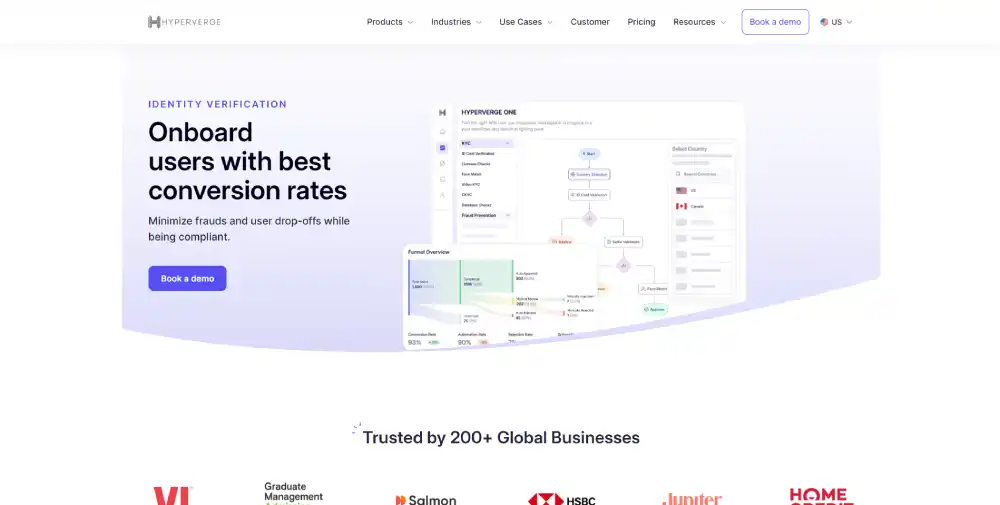
Key Features:
- AI Analysis: Detects manipulations using advanced algorithms.
- Real-Time Detection: Identifies fakes instantly.
- High Accuracy: Reliable against most deepfakes.
- Easy to Use: Simple interface for all users.
Limitations:
- Not Perfect: Can miss highly advanced deepfakes or flag genuine content.
- High Resource Use: Needs strong computing power.
Requires Updates: Needs frequent updates to stay effective.
4. DuckDuckGoose
DuckDuckGoose is a simple and effective tool for spotting deepfakes in videos and images.
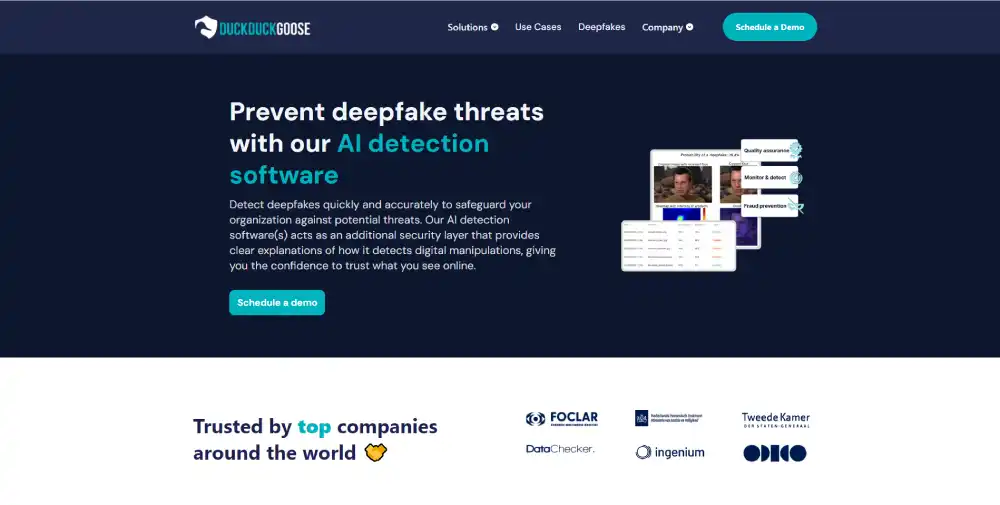
Key Features:
- Fast Results: Provides quick analysis of media.
- Cross-Platform: Compatible with various devices.
- Regular Updates: Keeps up with new deepfake trends.
Limitations:
- Accuracy Issues: May struggle with highly sophisticated deepfakes.
- Basic Features: Lacks advanced detection capabilities like biometric analysis.
5. Sentinel

It is an AI-based solution designed to identify deepfakes across digital platforms.
Key Features:
- Real-Time Detection: Quickly identifies fake content.
- Biometric Analysis: Detects subtle facial manipulations.
- Platform Integration: Works with social media and websites.
- Easy to Use: Simple interface for quick analysis.
Limitations:
- False Positives: Sometimes flags real content as fake.
- Advanced Deepfakes: Struggles with highly sophisticated fakes.
- Data Dependence: Requires diverse data for best accuracy.
6. Truepic
Truepic is a digital content verification tool that focuses on media integrity and authenticity, providing instant verification for images and videos.

Key Features:
- Truepic Vision API offers quick and reliable media verification.
- Trusted by organizations for secure, authentic communications.
- Provides tamper-proof digital certificates for verified content.
Limitations:
- Primarily focused on still images; limited video capabilities.
- May not detect the most advanced deepfakes without additional context.
7. Oz Liveness
It is an AI-powered solution that detects deepfakes using biometric data like facial movements and micro-expressions.
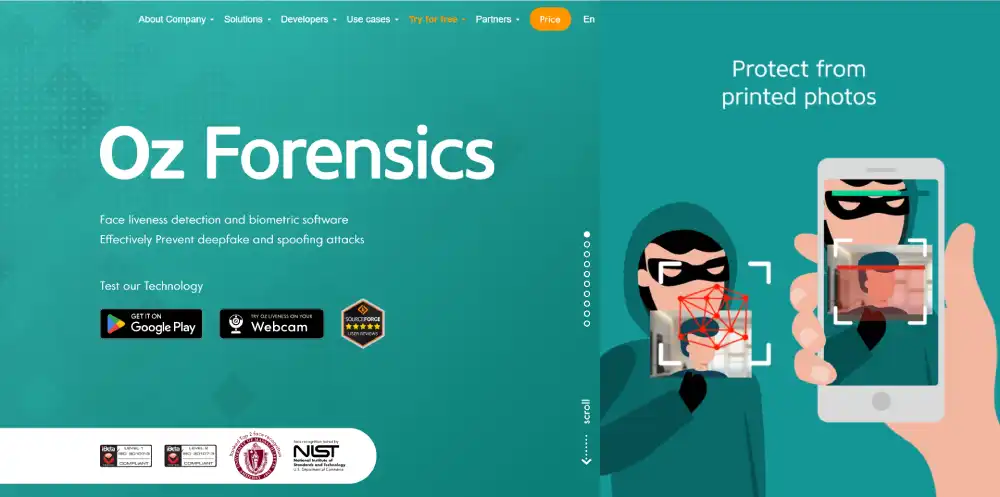
Key Features:
- Biometric Detection: Analyzes facial cues for authenticity.
- Real-Time Analysis: Quickly identifies deepfakes.
- High Accuracy: Reliable in detecting manipulated content.
Limitations:
- False Positives: Can mistakenly flag real content as fake.
- High Resource Use: Needs substantial computational power.
- Focus on Faces: Limited to detecting facial deepfakes.
8. Intel FakeCatcher
Intel FakeCatcher detects by analyzing biological signals in videos, such as subtle changes in skin color due to blood flow.
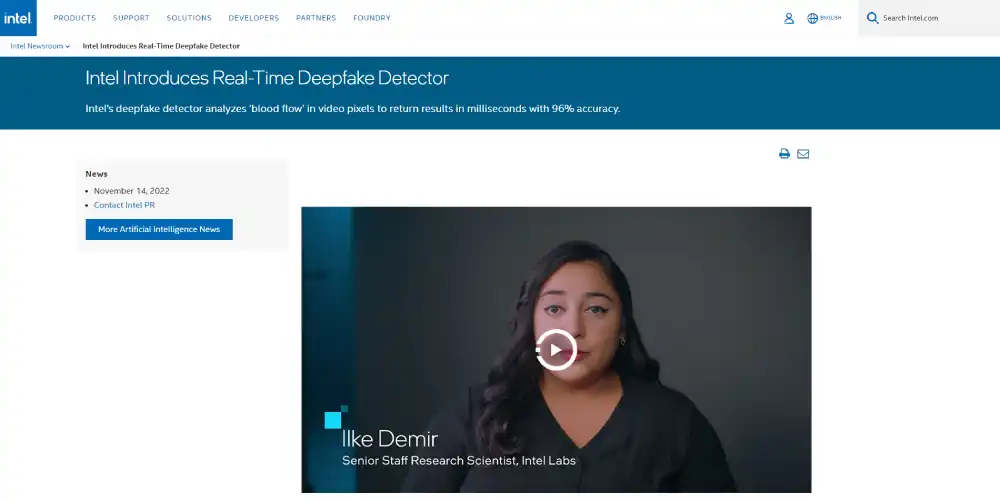
Key Features:
- Unique approach using biological signal analysis.
- High accuracy in real-time detection of deepfakes.
- Developed by a trusted name in technology, Intel.
Limitations:
- Limited to video content that clearly shows biological signals.
- Less effective on low-quality or compressed videos.
9. D-ID
D-ID provides AI-driven solutions to detect deepfakes, focusing on privacy protection and preventing misuse of facial recognition technology.
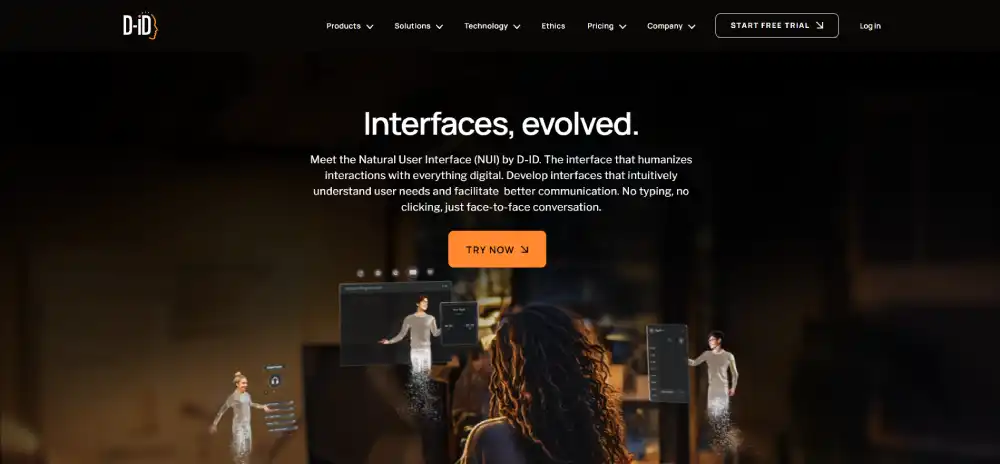
Key Features:
- Effective in identifying face-swapping techniques and synthetic media.
- Focuses on privacy and ethical use of AI.
- Provides API integration for easy deployment.
Limitations:
- Primarily focused on facial recognition; less effective on other types of deepfakes.
- Limited availability to individual users; mostly for enterprise solutions.
10. Reality Defender
Reality Defender is an AI-powered tool designed to detect fake media, offering instant feedback on content authenticity through browser extensions and APIs.

Key Features:
- Provides real-time detection and instant feedback.
- Easy integration into digital platforms with APIs and browser extensions.
Limitations:
- May not be as accurate as specialized tools for complex deepfakes.
- Limited to online content; does not support offline media analysis.
The Future of AI in DeepFake Detection
Deepfake technology is taking us into a digital world where nothing is quite what it seems—hello, confusion!
where ultra-realistic fake videos and images can spread like wildfire, turning the internet into a bizarre playground of misinformation.
Imagine a world where you can't trust your eyes—or your newsfeed! As deepfakes get craftier, our need for savvy detection methods is more pressing than ever.
- Real-Time Detection: AI tools will instantly flag deepfakes as they appear, preventing the spread of fake content.
- Smarter Algorithms: Advanced machine learning models will adapt quickly to new deepfake techniques, improving accuracy.
- Enhanced Biometric Analysis: AI will detect subtle details like micro-expressions and blood flow changes to identify deepfakes.
- Adaptive Learning: Continuous learning from new data will keep AI ahead of evolving deepfake methods.
How accurate are these Deepfake detection tools?
The accuracy of deepfake detection tools varies:
- Methods Used: AI tools typically range from 70% to 90% accuracy.
- Advanced Techniques: Biometric analysis and real-time detection enhance precision.
- Continuous Learning: Tools must update constantly to keep up with new deepfake methods.
- Data Quality: Effectiveness depends on the quality of the training data.
- Limitations: No tool is perfect; some deepfakes can still slip through.
Why Are Deepfake Detectors Important?
Deepfake detectors are essential to keep our digital world honest and secure:
- Stop Misinformation: They prevent fake videos from spreading lies and misleading the public.
- Protect People: They help shield individuals from harmful or false videos that can damage reputations.
- Maintain Trust: By catching deepfakes, they help ensure we can trust what we see online.
How Can Users Stay Ahead of Evolving Deepfake Threats?
To stay ahead of deepfake threats, users should use detection tools effectively and take extra precautions:
- Keep Tools Updated: Always use the latest versions to catch new deepfake techniques.
- Use Multiple Tools: Cross-check results with different detectors for better accuracy.
- Learn the Signs: Educate yourself on deepfake indicators like unnatural movements or mismatched audio.
Additional Tips
- Stay Skeptical: Question the authenticity of digital content, especially from unknown sources.
- Rely on Trusted Platforms: Use reputable sites that actively remove deepfakes.
- Report Suspicious Content: Help flag deepfakes by reporting anything that looks off.
Combining these strategies will help users better protect themselves from evolving deepfake threats.
Are AI Deepfake Detector Tools User-Friendly?
Many AI deepfake detectors are designed to be user-friendly:
- Easy Interfaces: Simple, clear interfaces make it easy to upload and analyze content.
- Helpful Guides: Most tools offer detailed documentation and tutorials to assist users.
- Good Support: Access to customer support, like live chat or email, helps resolve issues quickly.
- Inclusive Features: Some tools provide multi-language support and accessibility options.
Who Benefits from AI Deepfake Detectors?
- Journalists: Verify content for accurate news reporting.
- Law Enforcement: Identify fake media in investigations.
- Content Creators: Protect their original work from manipulation.
- General Public: Avoid being misled by fake videos.
These tools help everyone stay informed and safe from digital fakes.
FAQs
These tools employ AI algorithms, machine learning and biometric analysis to detect anomalies in the video or image making it appear that it has been manipulated.
These factors include; speed, accuracy, ability to actively detect new deepfake content, efficient user interface, cross-platform compatibility and upgrading of software to mirror the new deepfake techniques.
There are many tools that have a free option, but I have found that the paid tools tend to offer superior detection abilities, better detection, and frequent updates.
Tools are from 70% to 90% accurate, and the performances depend on the level of the deepfake and types of technologies applied.
Most of the tools have the capacity to identify simple deep fakes with ease, though the advanced deep fakes or novel ones may go unnoticed.
